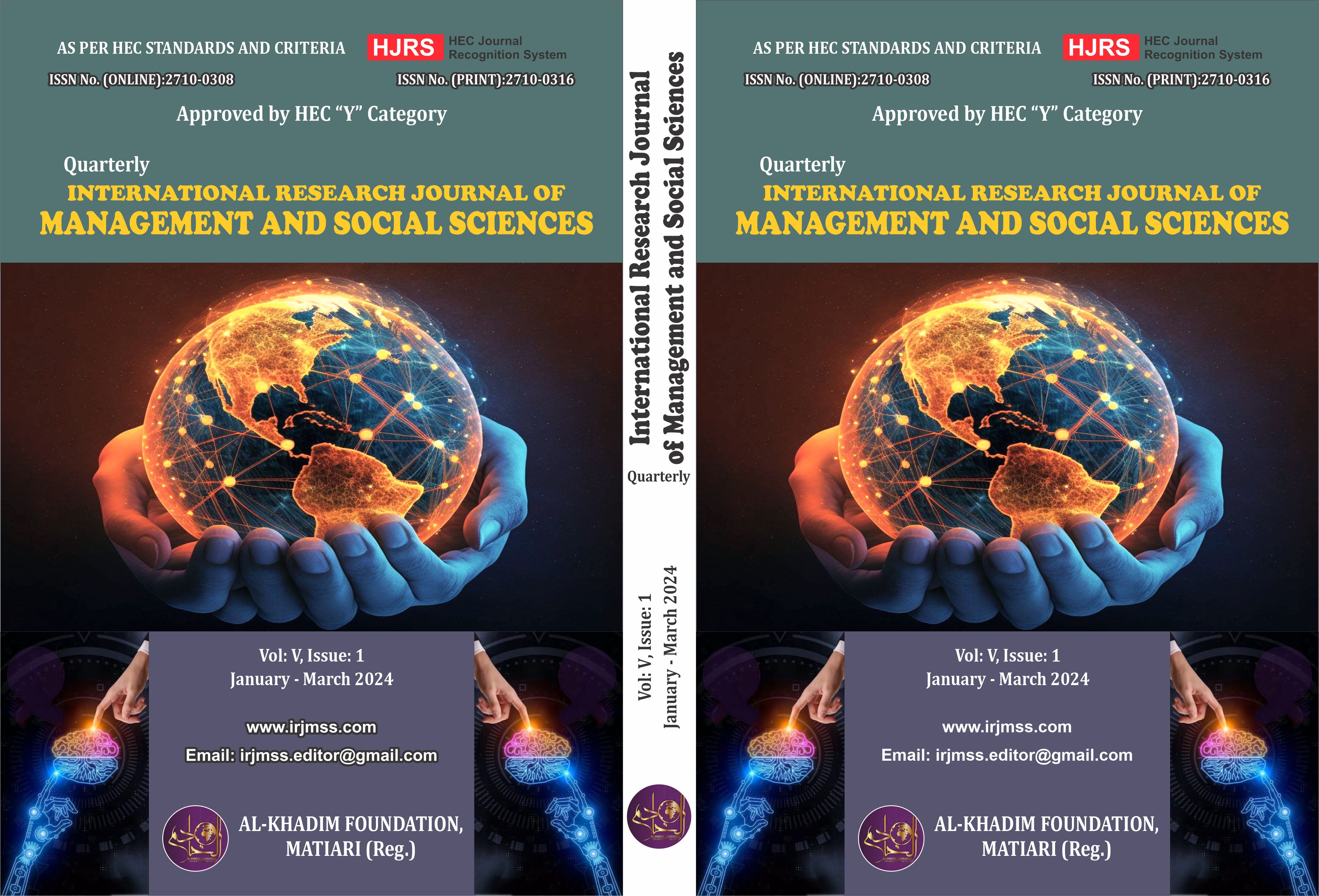The Vision of Hakim Muhammad Said and the Realization of Madinat al-Hikmah Bridging Tradition and Modernity in Education and Healthcare
Keywords:
Hakim Muhammad Said, Madinat al-Hikmah, Integrative Education, Traditional and Modern HealthcareAbstract
Hakim Muhammad Said, a distinguished scholar, and philanthropist, envisioned Madinat al-Hikmah as a beacon of knowledge and health in Pakistan, harmonizing traditional wisdom with contemporary advancements. This qualitative research delves into his visionary approach, examining how Madinat al-Hikmah exemplifies a unique blend of tradition and modernity in the realms of education and healthcare. The study explores the foundational principles laid by Hakim Said, emphasizing the integration of classical Islamic knowledge with modern educational methodologies. Through in-depth interviews with key stakeholders, including educators, healthcare professionals, and administrators, the research uncovers the strategies employed to maintain this delicate balance. Additionally, a thorough review of archival materials, including Hakim Said's writings and speeches, provides a historical context to his vision and its implementation. In the educational domain, the research highlights how Madinat al-Hikmah fosters a holistic learning environment, nurturing intellectual growth and moral development. The curriculum's innovative design, combining traditional Islamic sciences with contemporary subjects, is analyzed to understand its impact on students' academic and personal growth. The role of institutions like Hamdard University, within Madinat al-Hikmah, is scrutinized to gauge their contribution to promoting interdisciplinary learning and research. In the healthcare sector, the study investigates the integration of traditional Unani medicine with modern medical practices at facilities such as the Hamdard University Hospital. By examining patient care models, treatment protocols, and health outcomes, the research sheds light on the efficacy of this integrative approach. Ultimately, this study aims to provide a comprehensive understanding of how Hakim Muhammad Said's vision for Madinat al-Hikmah continues to bridge tradition and modernity, offering valuable insights for future educational and healthcare initiatives in Pakistan and beyond. The findings underscore the potential of such integrative models to address contemporary challenges while preserving cultural and intellectual heritage.
References
Ahmed, S. "Holistic Education and Modern Learning: A Comparative Study." Educational Review 60, no. 2 (2008): 143-159.
Ali, M. Visionary Leadership in Educational Institutions: The Case of Madinat al-Hikmah. Journal of Educational Leadership 45, no. 1 (2006): 30-47.
Ghosh, S. Unani Medicine: Principles and Practices. Traditional Medicine Review 8, no. 4 (2001): 200-213.
Khan, A. Unani Medicine and Modern Healthcare: Bridging the Gap. Journal of Traditional Medicine 12, no. 3 (2005): 45-56.
Khan, M. Integrative Approaches in Education: A Case Study. International Journal of Educational Research 51, no. 4 (2010): 272-284.
Memon, A. Traditional and Modern Medicine: A Comparative Analysis. Health Policy Journal 19, no. 2 (2014): 110-125.
Nawaz, S. Patient-Centered Care in Integrative Medicine. Journal of Holistic Health 13, no. 1 (2015): 25-38.
Patel, R. Global Trends in Integrative Healthcare. World Health Review 22, no. 3 (2018): 85-95.
Qureshi, M. Efficacy of Integrative Healthcare Models. Complementary Medicine Journal 20, no. 1 (2012): 65-78.
Rashid, T. Educational Integration in Islamic Institutions. Islamic Education Studies 6, no. 1 (2010): 55-70.
Said, H. Islamic Education and Modernity. Hamdard University Press, 1996.
Siddiqui, M. Philosophy of Islamic Education. Oxford University Press, 2000.
Smith, J. The Role of Visionary Leaders in Institutional Development. Leadership Quarterly 14, no. 3 (2003): 345-360.
Zaman, M. Unani Medicine and Its Modern Applications. Journal of Alternative Medicine 9, no. 2 (2002): 122-136.
Ahmed, S. "Integrating Islamic Values in Modern Education." Journal of Educational Philosophy 58, no. 2 (2009): 204-218.
Ali, M. Strategic Vision in Higher Education: The Madinat al-Hikmah Model. Educational Strategy Review 17, no. 1 (2008): 89-102.
Ghosh, S. "Unani Medicine: Historical Perspectives and Future Directions." Historical Medical Review 7, no. 3 (2003): 150-165.
Khan, A. "Bridging Ancient Practices with Contemporary Health Needs." Health Integration Journal 14, no. 2 (2007): 130-145.
Khan, M. Innovative Educational Practices in Islamic Institutions. Islamic Studies Review 23, no. 4 (2009): 75-88.
Memon, A. "Balancing Tradition and Modernity in Medicine." Medical Practice Journal 21, no. 3 (2013): 102-118.
Nawaz, S. "Integrative Approaches in Patient Care." Health and Wellness Review 15, no. 1 (2016): 55-70.
Patel, R. Advancements in Integrative Health Practices. Global Health Perspectives 20, no. 2 (2019): 95-110.
Qureshi, M. "Effectiveness of Combined Medical Approaches." Journal of Integrative Medicine 22, no. 4 (2014): 142-158.
Rashid, T. Curriculum Development in Islamic Education. Journal of Islamic Curriculum Studies 12, no. 3 (2011): 203-220.
Said, H. Modern Challenges in Islamic Education. Hamdard University Press, 2002.






